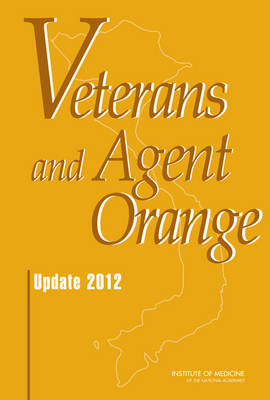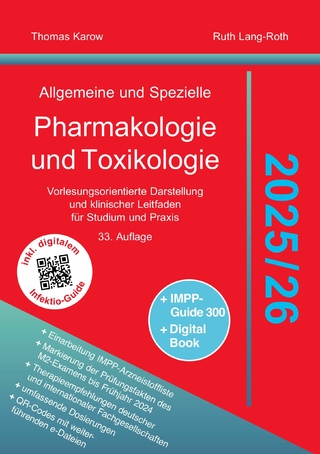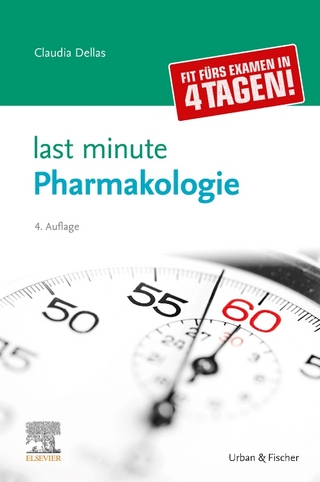
Veterans and Agent Orange
National Academies Press (Verlag)
978-0-309-28886-6 (ISBN)
From 1962 to 1971, the US military sprayed herbicides over Vietnam to strip the thick jungle canopy that could conceal opposition forces, to destroy crops that those forces might depend on, and to clear tall grasses and bushes from the perimeters of US base camps and outlying fire-support bases. Mixtures of 2,4-dichlorophenoxyacetic acid (2,4-D), 2,4,5-trichlorophenoxyacetic acid (2,4,5-T), picloram, and cacodylic acid made up the bulk of the herbicides sprayed. The main chemical mixture sprayed was Agent Orange, a 50:50 mixture of 2,4-D and 2,4,5-T. At the time of the spraying, 2,3,7,8-tetrachlorodibenzo-p-dioxin (TCDD), the most toxic form of dioxin, was an unintended contaminant generated during the production of 2,4,5-T and so was present in Agent Orange and some other formulations sprayed in Vietnam.
Because of complaints from returning Vietnam veterans about their own health and that of their children combined with emerging toxicologic evidence of adverse effects of phenoxy herbicides and TCDD, the National Academy of Sciences (NAS) was asked to perform a comprehensive evaluation of scientific and medical information regarding the health effects of exposure to Agent Orange, other herbicides used in Vietnam, and the various components of those herbicides, including TCDD. Updated evaluations are conducted every two years to review newly available literature and draw conclusions from the overall evidence.Veterans and Agent Orange: Update 2012 reviews peer-reviewed scientific reports concerning associations between health outcomes and exposure to TCDD and other chemicals in the herbicides used in Vietnam that were published in October 2010—September 2012 and integrates this information with the previously established evidence database. This report considers whether a statistical association with herbicide exposure exists, taking into account the strength of the scientific evidence and the appropriateness of the statistical and epidemiological methods used to detect the association; the increased risk of disease among those exposed to herbicides during service in the Republic of Vietnam during the Vietnam era; and whether there exists a plausible biological mechanism or other evidence of a causal relationship between herbicide exposure and the disease.
Table of Contents
Front Matter
Summary
1 Introduction
2 Evaluating the Evidence
3 Exposure to the Herbicides Used in Vietnam
4 Information Related to Biologic Plausibility
5 Epidemiologic Studies: Compendium of New Publications
6 Epidemiologic Studies: Background on Multiply Referenced Populations
7 Immune-System Disorders
8 Cancer
9 Fertility and Gestational Outcomes
10 Effects on Future Generations
11 Neurologic Disorders
12 Cardiovascular and Metabolic Outcomes
13 Other Chronic Health Outcomes
14 Conclusions and Recommendations
Appendix A: Issues Raised by the Public and Agendas of Public Meetings Held by the Committee to Review the Health Effects in Vietnam Veterans of Exposure to Herbicides (Ninth Biennial Update) and Other Written Submissions to the Committee
Appendix B: Short-Term Adverse Health Responses
Appendix C: Clarification of Cancer Groupings Used in Reporting Results, with Correspondence to National Institute for Occupational Safety and Health Cause-of-Death Codes and International Classification of Diseases Codes for Cancers
Appendix D: Biographies of Committee to Review the Health Effects in Vietnam Veterans of Exposure to Herbicides (Ninth Biennial Update) and Staff
1 Front Matter; 2 Summary; 3 1 Introduction; 4 2 Evaluating the Evidence; 5 3 Exposure to the Herbicides Used in Vietnam; 6 4 Information Related to Biologic Plausibility; 7 5 Epidemiologic Studies: Compendium of New Publications; 8 6 Epidemiologic Studies: Background on Multiply Referenced Populations; 9 7 Immune-System Disorders; 10 8 Cancer; 11 9 Fertility and Gestational Outcomes; 12 10 Effects on Future Generations; 13 11 Neurologic Disorders; 14 12 Cardiovascular and Metabolic Outcomes; 15 13 Other Chronic Health Outcomes; 16 14 Conclusions and Recommendations; 17 Appendix A: Issues Raised by the Public and Agendas of Public Meetings Held by the Committee to Review the Health Effects in Vietnam Veterans of Exposure to Herbicides (Ninth Biennial Update) and Other Written Submissions to the Committee; 18 Appendix B: Short-Term Adverse Health Responses; 19 Appendix C: Clarification of Cancer Groupings Used in Reporting Results, with Correspondence to National Institute for Occupational Safety and Health Cause-of-Death Codes and International Classification of Diseases Codes for Cancers; 20 Appendix D: Biographies of Committee to Review the Health Effects in Vietnam Veterans of Exposure to Herbicides (Ninth Biennial Update) and Staff
| Verlagsort | Washington |
|---|---|
| Sprache | englisch |
| Maße | 152 x 229 mm |
| Themenwelt | Studium ► 2. Studienabschnitt (Klinik) ► Pharmakologie / Toxikologie |
| ISBN-10 | 0-309-28886-X / 030928886X |
| ISBN-13 | 978-0-309-28886-6 / 9780309288866 |
| Zustand | Neuware |
| Haben Sie eine Frage zum Produkt? |
aus dem Bereich


